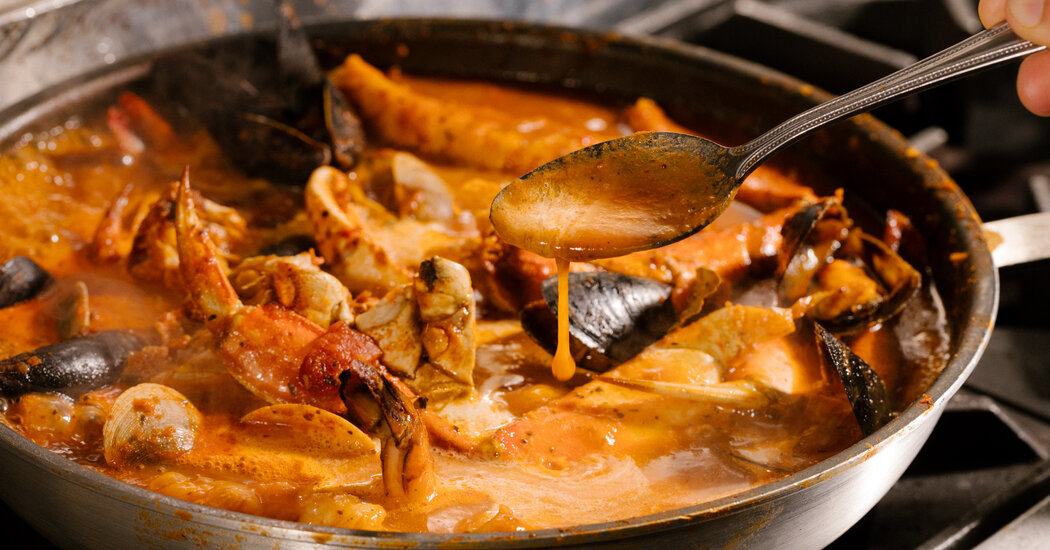
Dungeness crab season is shorter and more delicate than it used to be — this past year, the California Department of Fish and Wildlife delayed its start in an effort to protect whales moving through the area. The previous year, a toxic algal bloom, likely caused by warming and acidifying waters, shut down crab fisheries for months.
Cioppino is in fact as fragile as the industries that support it, though it’s so intertwined with San Francisco’s culinary identity that it exists year-round on menus. It has to, because it’s such a big seller: Adriano Dela Rosa, the chef at Tadich Grill, says the restaurant makes about 70 orders on a busy day, no matter the season.
The fish broth is thin, a little weary, but stretched out with white wine. And along with rock cod, mussels and clams, it holds a handful of tiny, sweet Bay shrimp and locally canned Dungeness crab meat.
Cioppino made with canned crab isn’t unusual. At Scoma’s, they call it “Lazy Man’s” cioppino, indicating that the diner will not have to mess around with a crab cracker, working to extract the meat.
Every time I ate a bowl of cioppino, and no matter how it was served, the person next to me leaned over to ask how it was, or to comment on its authenticity, or to loudly regret ordering anything else. “What you got there, cioppino? I knew I should’ve gotten the cioppino. Fran, look, she got the cioppino!”
At Anchor Oyster Bar, Alberto Cruz makes the marinara a few times a week — a blend of garlic, onions and peppers, sautéed in olive oil and simmered with dried herbs, canned tomatoes and tomato juices for hours, until it mellows and thickens.


